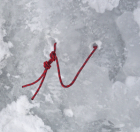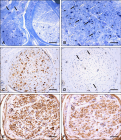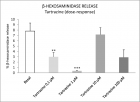Abstract
Research Article
A Comprehensive review on genomic diversity and epidemiology of COVID-19
Zeshan Haider Raza*, Muhammad Ahmed Ihsan, Sahrish Khan, Haroon Zafar and Tayyaba Rehman
Published: 22 July, 2020 | Volume 4 - Issue 1 | Pages: 081-095
A respiratory outbreak of COVID-19 started from Wuhan, China and on 30 January 2020, WHO declared this infection to be epidemic, implementing public health emergency worldwide. On 11th March 2020, observing its prevalence in the whole world and WHO declared as a pandemic. Many countries completely collapse in the grip of this pandemic, as there are no effective treatments available, the precaution is the sole remedy to minimize this infection. The emergence and pandemic of SARS-CoV-2 (since the SARS-CoV in 2002 and MERS-CoV in 2012] manifest the third time outline of highly contagious and pathogenic infection with infect-ability to spread globally in the twentieth-first century. The SARS CoV-2 genome is highly identical to bat coronavirus which is considered to be the perfect natural host. This coronavirus even utilizes the same ACE2 receptor as SARS-CoV and mainly spread the infection to the respiratory tract, which evidently showed that transmission of this virus through interactions and exposures. The death toll of these infected patients is increasing day by day especially when they have prehistory fatal diseases like cardiovascular, diabetics, and respiratory diseases. In this review, we summarized and explained the research progressed and available data on epidemiology, COVID-19 phylogenetic relation and its impact of different fatal disease and their relation and discuss the precautionary methods to combat this pandemic. Moreover, the pieces of evidence of spreading the virus through pets and prevention of being spreading by copper metal endorsement.
Read Full Article HTML DOI: 10.29328/journal.ijcv.1001021 Cite this Article Read Full Article PDF
Keywords:
COVID-19; Cardiovascular disease; Pregnancy; Infection; Transmission
References
- Organization WH. WHO Director-General’s remarks at the media briefing on 2019-nCoV on 11 February 2020. Internet] World Health Organization. 2020.
- Wang C, Horby PW, Hayden FG, Gao GF. A novel coronavirus outbreak of global health concern. The Lancet. 2020; 395: 470-473. PubMed: https://pubmed.ncbi.nlm.nih.gov/31986257/
- Sohrabi C, Alsafi Z, O’Neill N, Khan M, Kerwan A, Al-Jabir A, et al. World Health Organization declares global emergency: A review of the 2019 novel coronavirus (COVID-19). Int J Surg. 2020. PubMed: https://pubmed.ncbi.nlm.nih.gov/32112977/
- Kogan A, Segel MJ, Ram E, Raanani E, Peled-Potashnik Y, et al. Acute Respiratory Distress Syndrome following Cardiac Surgery: Comparison of the American-European Consensus Conference Definition versus the Berlin Definition. Respiration. 2019; 97: 518-524. PubMed: https://pubmed.ncbi.nlm.nih.gov/30650409/
- Huang C, Wang Y, Li X, Ren L, Zhao J, et al. Clinical features of patients infected with 2019 novel coronavirus in Wuhan, China. The Lancet. 2020; 395: 497-506. PubMed: https://pubmed.ncbi.nlm.nih.gov/31986264/
- Hui DS, Azhar EI, Madani TA, Ntoumi F, Kock R, et al. The continuing 2019-nCoV epidemic threat of novel coronaviruses to global health—The latest 2019 novel coronavirus outbreak in Wuhan, China. Int J Infect Dis. 2020; 91: 264. PubMed: https://pubmed.ncbi.nlm.nih.gov/31953166/
- Wu Z, McGoogan JM. Characteristics of and important lessons from the coronavirus disease 2019 (COVID-19) outbreak in China: summary of a report of 72 314 cases from the Chinese Center for Disease Control and Prevention. JAMA. 2020. PubMed: https://pubmed.ncbi.nlm.nih.gov/32091533/
- Coronavirus disease 2019 (COVID-19) Situation Report – 86.
- Bai Y, Yao L, Wei T, Tian F, Jin DY, et al. Presumed asymptomatic carrier transmission of COVID-19. JAMA. 2020; 323: 1406-1407. PubMed: https://pubmed.ncbi.nlm.nih.gov/32083643/
- Kahn JS, McIntosh K. History and recent advances in coronavirus discovery. Pediatr Infect Dis J. 2005; 24: S223-S227. PubMed: https://pubmed.ncbi.nlm.nih.gov/16378050/
- Savarino A, Boelaert JR, Cassone A, Majori G, Cauda R. Effects of chloroquine on viral infections: an old drug against today's diseases. Lancet Infect Dis. 2003; 3: 722-727. PubMed: https://pubmed.ncbi.nlm.nih.gov/14592603/
- Shereen MA, Khan S, Kazmi A, Bashir N, Siddique R. COVID-19 infection: origin, transmission, and characteristics of human coronaviruses. J Advan Res. 2020. PubMed: https://www.ncbi.nlm.nih.gov/pmc/articles/PMC7113610/
- Tyrrell D, Bynoe M. Cultivation of viruses from a high proportion of patients with colds. Lancet. 1966: 76-77. PubMed: https://pubmed.ncbi.nlm.nih.gov/4158999/
- Wang D, Hu B, Hu C, Zhu F, Liu X, et al. Clinical characteristics of 138 hospitalized patients with 2019 novel coronavirus–infected pneumonia in Wuhan, China. JAMA. 2020; 323: 1061-1069. PubMed: https://www.ncbi.nlm.nih.gov/pmc/articles/pmc7042881/
- Woo PC, Lau SK, Chu CM, Chan KH, Tsoi HW, et al. Characterization and complete genome sequence of a novel coronavirus, coronavirus HKU1, from patients with pneumonia. J Virol. 2005; 79: 884-895. PubMed: https://pubmed.ncbi.nlm.nih.gov/15613317/
- Woo PC, Lau SK, Tsoi HW, Huang Y, Poon RW, et al. Clinical and molecular epidemiological features of coronavirus HKU1–associated community-acquired pneumonia. J Infect Dis. 2005; 192: 1898-1907. PubMed: https://pubmed.ncbi.nlm.nih.gov/16267760
- Woo PC, Wang M, Lau SK, Xu H, Poon RW, Guo R, et al. Comparative analysis of twelve genomes of three novel group 2c and group 2d coronaviruses reveals unique group and subgroup features. J Virol. 2007; 81: 1574-1585. PubMed: https://www.ncbi.nlm.nih.gov/pmc/articles/PMC2612373/
- Bosis S, Esposito S, Niesters HG, Tremolati E, Pas S, et al. Coronavirus HKU1 in an Italian pre-term infant with bronchiolitis. J Clin Virol. 2007; 38: 251-253. PubMed: https://www.ncbi.nlm.nih.gov/pubmed/17320791
- Han CL, Yang F, Zhang TJ. 2001.
- Chiu SS, Hung Chan K, Wing Chu K, Kwan SW, et al. Human coronavirus NL63 infection and other coronavirus infections in children hospitalized with acute respiratory disease in Hong Kong, China. Clin Infect Dis. 2005; 40: 1721-1729. PubMed: https://pubmed.ncbi.nlm.nih.gov/15909257/
- Fehr AR, Perlman S. Coronaviruses: an overview of their replication and pathogenesis. Coronaviruses: Springer; 2015; 1-23. PubMed: https://pubmed.ncbi.nlm.nih.gov/25720466/
- Colson P, Rolain J-M, Lagier J-C, Brouqui P, Raoult D. Chloroquine and hydroxychloroquine as available weapons to fight COVID-19. Int J Antimicrob Agents. 2020; 105932. PubMed: https://pubmed.ncbi.nlm.nih.gov/32145363/
- Zhou P, Yang XL, Wang XG, Hu B, Zhang L, et al. Discovery of a novel coronavirus associated with the recent pneumonia outbreak in humans and its potential bat origin. Nature. 2020; 579: 270-273. PubMed: https://pubmed.ncbi.nlm.nih.gov/32015507/
- Paules CI, Marston HD, Fauci AS. Coronavirus infections—more than just the common cold. JAMA. 2020; 323: 707-708. PubMed: https://pubmed.ncbi.nlm.nih.gov/31971553/
- Lau SK, Woo PC, Li KS, Huang Y, Tsoi HW, et al. Severe acute respiratory syndrome coronavirus-like virus in Chinese horseshoe bats. Proc Natl Acad Sci U S A. 2005; 102: 14040-14045. PubMed: https://pubmed.ncbi.nlm.nih.gov/16169905/
- Hu B, Ge X, Wang LF, Shi Z. Bat origin of human coronaviruses. Virol J. 2015; 12: 221.
- Zhu N, Zhang D, Wang W, Li X, Yang B, et al. China Novel Coronavirus Investigating and Research Team. A novel coronavirus from patients with pneumonia in China, 2019. N Engl J Med. 2020; 382: 727-733. PubMed: https://pubmed.ncbi.nlm.nih.gov/31978945/
- Cheever FS, Daniels JB, Pappenheimer AM, Bailey OT. A murine virus (JHM) causing disseminated encephalomyelitis with extensive destruction of myelin: I. Isolation and biological properties of the virus. J Experimen Med. 1949; 90: 181-210. PubMed: https://pubmed.ncbi.nlm.nih.gov/18137294
- Guan Y, Zheng B, He Y, Liu X, Zhuang Z, et al. Isolation and characterization of viruses related to the SARS coronavirus from animals in southern China. Science. 2003; 302: 276-268. PubMed: https://pubmed.ncbi.nlm.nih.gov/12958366/
- Hamre D, Procknow JJ. A new virus isolated from the human respiratory tract. Proc Society Experimen Biol Med. 1966; 121: 190-193. PubMed: https://pubmed.ncbi.nlm.nih.gov/4285768/
- Doyle I. LP and Hutchings, LM A transmissible gastroenteritis in pigs. J Am Vet Med Assoc. 1946; 108: 257-259. PubMed: https://pubmed.ncbi.nlm.nih.gov/21020443/
- Chu D, Peiris J, Chen H, Guan Y, Poon LL. Genomic characterizations of bat coronaviruses (1A, 1B and HKU8) and evidence for co-infections in Miniopterus bats. J General Virol. 2008; 89: 1282-1287. PubMed: https://pubmed.ncbi.nlm.nih.gov/18420807/
- Esper F, Weibel C, Ferguson D, Landry ML, Kahn JS. Coronavirus HKU1 infection in the United States. Emerging Infect Dis. 2006; 12: 775. PubMed: https://www.ncbi.nlm.nih.gov/pmc/articles/PMC3374449/
- Gerna G, Percivalle E, Sarasini A, Campanini G, Piralla A, Rovida F, et al. Human respiratory coronavirus HKU1 versus other coronavirus infections in Italian hospitalised patients. J Clini Virol. 2007; 38: 244-250. PubMed: https://www.ncbi.nlm.nih.gov/pmc/articles/PMC3185465/
- Kupfer B, Simon A, Jonassen C, Viazov S, Ditt V, et al. Two cases of severe obstructive pneumonia associated with an HKU1-like coronavirus. Euro J Med Res. 2007; 12: 134.
- Lau SK, Poon RW, Wong BH, Wang M, Huang Y, et al. Coexistence of different genotypes in the same bat and serological characterization of Rousettus bat coronavirus HKU9 belonging to a novel Betacoronavirus subgroup. J Virol. 2010; 84: 11385-11394.
- Lau SK, Woo PC, Yip CC, Tse H, Tsoi HW, et al. Coronavirus HKU1 and other coronavirus infections in Hong Kong. J Clin Microbiol. 2006; 44: 2063-20671. PubMed: https://pubmed.ncbi.nlm.nih.gov/16757599/
- Vabret A, Dina J, Gouarin S, Petitjean J, Corbet S, Freymuth F. Detection of the new human coronavirus HKU1: a report of 6 cases. Clin Infect Dis. 2006; 42: 634-639. PubMed: https://www.ncbi.nlm.nih.gov/pmc/articles/PMC7107802/
- Sloots TP, McErlean P, Speicher DJ, Arden KE, Nissen MD, et al. Evidence of human coronavirus HKU1 and human bocavirus in Australian children. J Clini Virol. 2006; 35: 99-102. PubMed: https://www.ncbi.nlm.nih.gov/pubmed/16257260
- Woo PC, Lau SK, Yip CC, Huang Y, Tsoi HW, et al. Comparative analysis of 22 coronavirus HKU1 genomes reveals a novel genotype and evidence of natural recombination in coronavirus HKU1. J Virol. 2006; 80: 7136-7145. PubMed: https://www.ncbi.nlm.nih.gov/pmc/articles/PMC1489027/
- Lau SK, Woo PC, Li KS, Huang Y, Wang M, et al. Complete genome sequence of bat coronavirus HKU2 from Chinese horseshoe bats revealed a much smaller spike gene with a different evolutionary lineage from the rest of the genome. Virology. 2007; 367: 428-439. PubMed: https://pubmed.ncbi.nlm.nih.gov/17617433/
- Arden KE, Nissen MD, Sloots TP, Mackay IM. New human coronavirus, HCoV‐NL63, associated with severe lower respiratory tract disease in Australia. J Med Virol. 2005; 75: 455-462. PubMed: https://pubmed.ncbi.nlm.nih.gov/15648064/
- Mihindukulasuriya KA, Wu G, Leger JS, Nordhausen RW, Wang D. Identification of a novel coronavirus from a beluga whale by using a panviral microarray. J Virol. 2008; 82: 5084-5098. PubMed: https://pubmed.ncbi.nlm.nih.gov/18353961/
- Beaudette F. Cultivation of the virus of infectious bronchitis. J Am Vet Med Assoc. 1937; 90: 51-60.
- Cui J, Li F, Shi Z-L. Origin and evolution of pathogenic coronaviruses. Nat Rev Microbiol. 2019; 17: 181-192. PubMed: https://pubmed.ncbi.nlm.nih.gov/30531947/
- van der Hoek L, Pyrc K, Jebbink MF, Vermeulen-Oost W, Berkhout RJ, Wolthers KC, et al. Identification of a new human coronavirus. Nat Med. 2004; 10: 368-373. PubMed: https://pubmed.ncbi.nlm.nih.gov/15034574/
- Wu A, Peng Y, Huang B, Ding X, Wang X, et al. Genome composition and divergence of the novel coronavirus (2019-nCoV) originating in China. Cell Host Microbe. 2020. PubMed: https://pubmed.ncbi.nlm.nih.gov/32035028/
- Li B, Si HR, Zhu Y, Yang XL, Anderson DE, et al. Discovery of bat coronaviruses through surveillance and probe capture-based next-generation sequencing. Msphere. 2020; 5.
- Gralinski L, Menachery V. Return of the coronavirus: 2019-nCoV. Viruses. J Popul Ther Clin Pharmacol. 2020; 27: e19-e22. PubMed: https://pubmed.ncbi.nlm.nih.gov/31991541/
- Fouchier RA, Hartwig NG, Bestebroer TM, Niemeyer B, de Jong JC, et al. A previously undescribed coronavirus associated with respiratory disease in humans. Proceedings of the National Academy of Sciences. 2004; 101: 6212-6216. PubMed: https://pubmed.ncbi.nlm.nih.gov/15073334/
- Tang X, Zhang J, Zhang S, Wang P, Fan X, et al. Prevalence and genetic diversity of coronaviruses in bats from China. J Virol. 2006; 80: 7481-7490. PubMed: https://pubmed.ncbi.nlm.nih.gov/16840328/
- Jendrach M, Thiel V, Siddell S. Characterization of an internal ribosome entry site within mRNA 5 of murine hepatitis virus. Archives of virology. 1999; 144: 921-933. PubMed: https://www.ncbi.nlm.nih.gov/pubmed/10416375
- Esposito S, Bosis S, Niesters HG, Tremolati E, Begliatti E, et al. Impact of human coronavirus infections in otherwise healthy children who attended an emergency department. J Med Virol. 2006; 78: 1609-1615. PubMed: https://pubmed.ncbi.nlm.nih.gov/17063525/
- Ebihara T, Endo R, Ma X, Ishiguro N, Kikuta H. Detection of human coronavirus NL63 in young children with bronchiolitis. J Med Virol. 2005; 75: 463-465. PubMed: https://pubmed.ncbi.nlm.nih.gov/15648061/
- Koetz A, Nilsson P, Lindén MV, Van Der Hoek L, Ripa T. Detection of human coronavirus NL63, human metapneumovirus and respiratory syncytial virus in children with respiratory tract infections in south-west Sweden. Clin Microbiol Infect. 2006; 12: 1089-1096. PubMed: https://pubmed.ncbi.nlm.nih.gov/17002608/
- Suzuki A, Okamoto M, Ohmi A, Watanabe O, Miyabayashi S, Nishimura H. Detection of human coronavirus-NL63 in children in Japan. Pediat Infect Dis J. 2005; 24: 645-646. PubMed: https://pubmed.ncbi.nlm.nih.gov/15999010/
- Xu X, Chen P, Wang J, Feng J, Zhou H, et al. Evolution of the novel coronavirus from the ongoing Wuhan outbreak and modeling of its spike protein for risk of human transmission. Science China Life Sciences. 2020; 63: 457-460. PubMed: https://pubmed.ncbi.nlm.nih.gov/32009228/
- Organization WH. Laboratory testing for coronavirus disease 2019 (COVID-19) in suspected human cases: interim guidance, 2 March 2020. World Health Organization. 2020.
- Corman VM, Ithete NL, Richards LR, Schoeman MC, Preiser W, et al. Rooting the phylogenetic tree of middle East respiratory syndrome coronavirus by characterization of a conspecific virus from an African bat. J Virol. 2014; 88: 11297-11303. PubMed: https://www.ncbi.nlm.nih.gov/pmc/articles/PMC4178802/
- Chen N, Zhou M, Dong X, Qu J, Gong F, Han Y, et al. Epidemiological and clinical characteristics of 99 cases of 2019 novel coronavirus pneumonia in Wuhan, China: a descriptive study. The Lancet. 2020; 395: 507-513. PubMed: https://pubmed.ncbi.nlm.nih.gov/32007143/
- Coronavirus and pets: faqs for owners.
- USDA Statement on the Confirmation of COVID-19 in a Tiger in New York.
- Acconcia A, D’Amato M, Martina R. Tax evasion and corruption in tax administration. J Public Economics. 2003; 105: 1-2.
- Tabriz AG, Hermida MA, Leslie NR, Shu W. Three-dimensional bioprinting of complex cell laden alginate hydrogel structures. Biofabrication. 2015; 7: 045012. PubMed: https://pubmed.ncbi.nlm.nih.gov/26689257/
- Li Q, Guan X, Wu P, Wang X, Zhou L, et al. Early transmission dynamics in Wuhan, China, of novel coronavirus–infected pneumonia. N Eng J Med. 2020. PubMed: https://pubmed.ncbi.nlm.nih.gov/31995857/
- Wu F, Zhao S, Yu B. A new coronavirus associated with human respiratory disease in China. Nature. 2020; 579: 265–269.. PubMed: https://www.ncbi.nlm.nih.gov/pmc/articles/PMC7094943/
- Chan JW, Kok KH, Zhu Z, Chu H, To KKW, et al. Genomic characterization of the 2019 novel human-pathogenic coronavirus isolated from a patient with atypical pneumonia after visiting Wuhan. Emerging Microbes Infect. 2020; 9: 221-236. PubMed: https://www.ncbi.nlm.nih.gov/pmc/articles/PMC7067204/
- Liu Z, Xiao X, Wei X, Li J, Yang J, et al. Composition and divergence of coronavirus spike proteins and host ACE2 receptors predict potential intermediate hosts of SARS‐CoV‐2. J Med Virol. 2020; 92: 595-601. PubMed: https://pubmed.ncbi.nlm.nih.gov/32100877/
- Paraskevis D, Kostaki EG, Magiorkinis G, Panayiotakopoulos G, Sourvinos G, et al. Full-genome evolutionary analysis of the novel corona virus (2019-nCoV) rejects the hypothesis of emergence as a result of a recent recombination event. Infection, Genetics and Evolution. 2020; 79: 104212. PubMed: https://pubmed.ncbi.nlm.nih.gov/32004758/
- Kang CK, Song KH, Choe PG, Park WB, Bang JH, et al. Clinical and epidemiologic characteristics of spreaders of Middle East respiratory syndrome coronavirus during the 2015 outbreak in Korea. J Korean Med Sci. 2017; 32: 744-749. PubMed: https://pubmed.ncbi.nlm.nih.gov/28378546/
- Guan WJ, Ni ZY, Hu Y, Liang WH, Ou CQ, et al. Clinical characteristics of coronavirus disease 2019 in China. N Eng J Med. 2020; 382: 1708-1720. PubMed: https://pubmed.ncbi.nlm.nih.gov/32109013/
- Chowell G, Abdirizak F, Lee S, Lee J, Jung E, et al. Transmission characteristics of MERS and SARS in the healthcare setting: a comparative study. BMC Med. 2015; 13: 210. PubMed: https://pubmed.ncbi.nlm.nih.gov/26336062/
- Bauch CT, Lloyd-Smith JO, Coffee MP, Galvani AP. Dynamically modeling SARS and other newly emerging respiratory illnesses: past, present, and future. Epidemiology. 2005: 791-801. PubMed: https://pubmed.ncbi.nlm.nih.gov/16222170/
- Daskalopoulou SS, Rabi DM, Zarnke KB, Dasgupta K, Nerenberg K, et al. The 2015 Canadian Hypertension Education Program recommendations for blood pressure measurement, diagnosis, assessment of risk, prevention, and treatment of hypertension. Canadian J Cardiol. 2015; 31: 549-568. PubMed: https://pubmed.ncbi.nlm.nih.gov/25936483
- Zheng YY, Ma YT, Zhang JY, Xie X. COVID-19 and the cardiovascular system. Nat Rev Cardiol. 2020; 17: 259-260. PubMed: https://pubmed.ncbi.nlm.nih.gov/32139904/
- Kuba K, Imai Y, Rao S, Gao H, Guo F, Guan B, et al. A crucial role of angiotensin converting enzyme 2 (ACE2) in SARS coronavirus–induced lung injury. Nat Med. 2005; 11: 875-879. PubMed: https://pubmed.ncbi.nlm.nih.gov/16007097/
- Shi S, Qin M, Shen B, Cai Y, Liu T, et al. Association of cardiac injury with mortality in hospitalized patients with COVID-19 in Wuhan, China. JAMA Cardiol. 2020; 25; 5: 802-810. PubMed: https://pubmed.ncbi.nlm.nih.gov/32211816/
- Guo T, Fan Y, Chen M, Wu X, Zhang L, et al. Cardiovascular implications of fatal outcomes of patients with coronavirus disease 2019 (COVID-19). JAMA Cardiol. 2020; 5: 1-8. PubMed: https://pubmed.ncbi.nlm.nih.gov/32219356
- Lillie PJ, Samson A, Li A, Adams K, Capstick R, Barlow GD, et al. Novel coronavirus disease (Covid-19): the first two patients in the UK with person to person transmission. J Infect. 2020; 80: 578-606 PubMed: https://pubmed.ncbi.nlm.nih.gov/32119884/
- Alhogbani T. Acute myocarditis associated with novel Middle East respiratory syndrome coronavirus. Ann Saudi Med. 2016; 36: 78-80. PubMed: https://pubmed.ncbi.nlm.nih.gov/26922692/
- Imai Y, Kuba K, Rao S, Huan Y, Guo F, et al. Angiotensin-converting enzyme 2 protects from severe acute lung failure. Nature. 2005; 436: 112-116. PubMed: https://pubmed.ncbi.nlm.nih.gov/16001071/
- Gurwitz D. Angiotensin receptor blockers as tentative SARS‐CoV‐2 therapeutics. Drug Dev Res. 2020. PubMed: https://pubmed.ncbi.nlm.nih.gov/32129518/
- Ishiyama Y, Gallagher PE, Averill DB, Tallant EA, Brosnihan KB, et al. Upregulation of angiotensin-converting enzyme 2 after myocardial infarction by blockade of angiotensin II receptors. Hypertension. 2004; 43: 970-976. PubMed: https://pubmed.ncbi.nlm.nih.gov/15007027/
- Ferrario CM, Jessup J, Chappell MC, Averill DB, Brosnihan KB, et al. Effect of angiotensin-converting enzyme inhibition and angiotensin II receptor blockers on cardiac angiotensin-converting enzyme 2. Circulation. 2005; 111: 2605-2610. PubMed: https://pubmed.ncbi.nlm.nih.gov/15897343/
- Ocaranza MP, Palomera C, Román M, Bargetto J, Lavandero S, et al. Effect of hypertension on angiotensin-(1–7) levels in rats with different angiotensin-I converting enzyme polymorphism. Life Sciences. 2006; 78: 1535-1542.
- Walters TE, Kalman JM, Patel SK, Mearns M, Velkoska E, et al. Angiotensin converting enzyme 2 activity and human atrial fibrillation: increased plasma angiotensin converting enzyme 2 activity is associated with atrial fibrillation and more advanced left atrial structural remodelling. Ep Europace. 2017; 19: 1280-1287. PubMed: https://pubmed.ncbi.nlm.nih.gov/27738071/
- Burchill LJ, Velkoska E, Dean RG, Griggs K, Patel SK, et al. Combination renin–angiotensin system blockade and angiotensin-converting enzyme 2 in experimental myocardial infarction: implications for future therapeutic directions. Clin Sci. 2012; 123: 649-658. PubMed:
- Zhu H, Wang L, Fang C, Peng S, Zhang L, et al. Clinical analysis of 10 neonates born to mothers with 2019-nCoV pneumonia. Translational Pediatrics. 2020; 9: 51-60. PubMed: https://www.ncbi.nlm.nih.gov/pmc/articles/PMC7036645/
- Alvarado M, Schwartz D. Zika virus in pregnancy, microcephaly and maternal and fetal health: What we think, what we know, and what we think we know. Arch Pathol Lab Med. 2016; 141: 26-32. PubMed: https://pubmed.ncbi.nlm.nih.gov/27636525/
- Zhu N, Zhang D, Wang W, Li X, Yang B, et al. China Novel Coronavirus Investigating and Research Team. N Engl J Med. 2020; 382: 727-733. PubMed: https://pubmed.ncbi.nlm.nih.gov/31978945/
- Huang C. Huang C, Wang Y, Li X, et al. Clinical features of patients infected with. 2019: 497-506. PubMed: https://www.ncbi.nlm.nih.gov/pmc/articles/PMC7159299/
- Michalowski W, Rubin S, Slowinski R, Wilk S. Mobile clinical support system for pediatric emergencies. Decision Support Systems. 2003; 36: 161-176.
- Rasmussen SA, Kissin DM, Yeung LF, MacFarlane K, Chu SY, et al. Preparing for influenza after 2009 H1N1: special considerations for pregnant women and newborns. Am J Obstet Gynecol. 2011; 204: S13-S20. PubMed: https://www.ncbi.nlm.nih.gov/pmc/articles/PMC6771262/
- Rasmussen SA, Smulian JC, Lednicky JA, Wen TS, Jamieson DJ. Coronavirus Disease 2019 (COVID-19) and Pregnancy: What obstetricians need to know. Am J Obstet Gynecol. 2020; 222: 415-426. PubMed: https://pubmed.ncbi.nlm.nih.gov/32105680/
- Schwartz DA, Graham AL. Potential maternal and infant outcomes from (Wuhan) coronavirus 2019-nCoV infecting pregnant women: lessons from SARS, MERS, and other human coronavirus infections. Viruses. 2020; 12: 194. PubMed: https://pubmed.ncbi.nlm.nih.gov/32050635/
- Schwartz DA. An analysis of 38 pregnant women with COVID-19, their newborn infants, and maternal-fetal transmission of SARS-CoV-2: maternal coronavirus infections and pregnancy outcomes. Arch Pathol Lab Med. 2020. PubMed: https://pubmed.ncbi.nlm.nih.gov/32180426/
- Maxwell C, McGeer A, Tai KFY, Sermer M. No. 225-Management Guidelines for Obstetric Patients and Neonates Born to Mothers With Suspected or Probable Severe Acute Respiratory Syndrome (SARS). J Obstet Gynaecol Canada. 2017; 39: e130-e137. PubMed: https://pubmed.ncbi.nlm.nih.gov/28729104/
- Wang X, Zhou Z, Zhang J, Zhu F, Tang Y, et al. A case of 2019 Novel Coronavirus in a pregnant woman with preterm delivery. Clin Infect Dis. 2020; ciaa200 PubMed: https://www.ncbi.nlm.nih.gov/pmc/articles/PMC7108126/
- Chen H, Guo J, Wang C, Luo F, Yu X, et al. Clinical characteristics and intrauterine vertical transmission potential of COVID-19 infection in nine pregnant women: a retrospective review of medical records. The Lancet. 2020; 395: 809-815. PubMed: https://pubmed.ncbi.nlm.nih.gov/32151335/
- Pacheco LD, Saade GR, Hankins GD, editors. Extracorporeal membrane oxygenation (ECMO) during pregnancy and postpartum. Semin Perinatol. 2018: 42: 21-25. PubMed: https://pubmed.ncbi.nlm.nih.gov/29179956/
- Arabi YM, Mandourah Y, Al-Hameed F, Sindi AA, Almekhlafi GA, et al. Corticosteroid therapy for critically ill patients with Middle East respiratory syndrome. Am J Respirat Critical Care Med. 2018; 197: 757-767. PubMed: https://pubmed.ncbi.nlm.nih.gov/29161116/
- D’Amore R. Can coronavirus pass from mother to baby? Maybe, but experts need more research. Global News. 2020; 2020.
- Wan Y, Shang J, Graham R, Baric RS, Li F. Receptor recognition by the novel coronavirus from Wuhan: an analysis based on decade-long structural studies of SARS coronavirus. J Virol. 2020; 94: e00127-120. PubMed: https://pubmed.ncbi.nlm.nih.gov/31996437/
- Lane HC, Marston HD, Fauci AS. Conducting clinical trials in outbreak settings: points to consider. Clinical trials. 2016; 13: 92-95. PubMed: https://www.ncbi.nlm.nih.gov/books/NBK441674/
- Yang J, Feng Y, Yuan M, Yuan S, Fu H, et al. Plasma glucose levels and diabetes are independent predictors for mortality and morbidity in patients with SARS. Diabetic Med. 2006; 23: 623-628. PubMed: https://pubmed.ncbi.nlm.nih.gov/16759303/
- Alene KA, Viney K, Gray DJ, McBryde ES, Wagnew M, et al. Mapping tuberculosis treatment outcomes in Ethiopia. BMC Infect Dis. 2019; 19: 474. PubMed: https://www.ncbi.nlm.nih.gov/pubmed/31138129
- Deng SQ, Peng HJ. Characteristics of and public health responses to the coronavirus disease 2019 outbreak in China. J Clin Med. 2020; 9: 575. PubMed: https://pubmed.ncbi.nlm.nih.gov/32093211/
- Zhang JJ, Dong X, Cao YY, Yuan YD, Yang YB, et al. Clinical characteristics of 140 patients infected with SARS‐CoV‐2 in Wuhan, China. Allergy. 2020; 75: 1730-1741 PubMed: https://pubmed.ncbi.nlm.nih.gov/32077115/
- Ruan Q, Yang K, Wang W, Jiang L, Song J. Clinical predictors of mortality due to COVID-19 based on an analysis of data of 150 patients from Wuhan, China. Intensive Care Med. 2020: 46: 846-848. PubMed: https://pubmed.ncbi.nlm.nih.gov/32125452/
- Lippi G, Plebani M. Laboratory abnormalities in patients with COVID-2019 infection. Clin Chem Lab Med. 2020; 58: 1131-1134. PubMed: https://pubmed.ncbi.nlm.nih.gov/32119647/
- Sun M, Yang J, Sun Y, Su G. Inhibitors of RAS might be a good choice for the therapy of COVID-19 pneumonia. Zhonghua Jie He He Hu Xi Za Zhi. 2020; 43: E014-014E. PubMed: https://pubmed.ncbi.nlm.nih.gov/32061198/
- Phadke M, Saunik S. Use of angiotensin receptor blockers such as Telmisartan, Losartsan in nCoV Wuhan Corona Virus infections–Novel mode of treatment. BMJ. 2020; 368: 406.
- Lamanna C, Mallette MF. Basic Bacteriology: Its Biological and Chemical Background. Basic Bacteriology: Its Biological and Chemical Background. 1965; 3.
- Schmidt MG, von Dessauer B, Benavente C, Benadof D, Cifuentes P, et al. Copper surfaces are associated with significantly lower concentrations of bacteria on selected surfaces within a pediatric intensive care unit. Am J Infect Control. 2016; 44: 203-209. PubMed: https://www.ncbi.nlm.nih.gov/pubmed/26553403
- Henderson E, Michels J, Sagel J. Flexible film plate-mat bag. Google Patents; 2009.
- Michels H, Noyce J, Keevil CW. Effects of temperature and humidity on the efficacy of methicillin‐resistant Staphylococcus aureus challenged antimicrobial materials containing silver and copper. Lett Appl Microbiol. 2009; 49: 191-195. PubMed: https://www.ncbi.nlm.nih.gov/pmc/articles/PMC2779462/
- Zumla A, Chan JF, Azhar EI, Hui DS, Yuen KY. Coronaviruses—drug discovery and therapeutic options. Nature reviews Drug discovery. 2016; 15: 327-347. PubMed: https://www.ncbi.nlm.nih.gov/pmc/articles/PMC7097181/
- Thompson R. Pandemic potential of 2019-nCoV. The Lancet Infect Dis. 2020; 20: 280. PubMed: https://pubmed.ncbi.nlm.nih.gov/32043978/
- Coronavirus disease (COVID-19) advice for the public: When and how to use masks.
Figures:

Figure 1

Figure 2
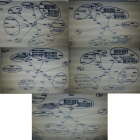
Figure 3
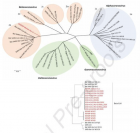
Figure 4
Similar Articles
-
Antiviral activity of Eucalyptus camaldulensis leaves ethanolic extract on herpes viruses infectionMahmoud Huleihel*,Aya Abu-Jafar. Antiviral activity of Eucalyptus camaldulensis leaves ethanolic extract on herpes viruses infection. . 2017 doi: 10.29328/journal.ijcv.1001001; 1: 001-009
-
Unveiling the gut virome in human health and diseasesTao Zuo*. Unveiling the gut virome in human health and diseases. . 2018 doi: 10.29328/journal.ijcv.1001002; 2: 001-003
-
Determine seroprevalence and associated risk factors of HBV infection among pregnant women and it relationship with blood transfusion at Hargeisa Group Hospital, Hargeisa, SomalilandAbdullah Al-Mamari*. Determine seroprevalence and associated risk factors of HBV infection among pregnant women and it relationship with blood transfusion at Hargeisa Group Hospital, Hargeisa, Somaliland. . 2019 doi: 10.29328/journal.ijcv.1001003; 3: 001-009
-
A model of the 2014 Ebola virus: Evidence of West AfricaNadhem Selmi*. A model of the 2014 Ebola virus: Evidence of West Africa. . 2019 doi: 10.29328/journal.ijcv.1001004; 3: 010-015
-
Frequency of cytomegalovirus infection in children with Nephrotic SyndromeDoaa Mohammed Youssef*,Mohammed Hassan Mohammed,Eman Mohammed EL-Behaidy,Asmaa EL-Sayed Abo-warda1. Frequency of cytomegalovirus infection in children with Nephrotic Syndrome. . 2019 doi: 10.29328/journal.ijcv.1001005; 3: 016-020
-
Low sensitivity of the careHPV™ Assay for detection of Oncogenic Human Papillomavirus in cervical samples from HIV-infected and HIV-uninfected Kenyan womenBrown DR*,Titus M,Ermel A,Moormann A,Cu-Uvin S,Orang’o O,Tonui P,Chelimo K,Rosen B,Itsura P,Muthoka K,Loehrer P,Ong’echa JM. Low sensitivity of the careHPV™ Assay for detection of Oncogenic Human Papillomavirus in cervical samples from HIV-infected and HIV-uninfected Kenyan women. . 2020 doi: 10.29328/journal.ijcv.1001006; 4: 001-005
-
Rubella infection: Advances and challenges in the diagnosis and prevention of Congenital Rubella SyndromeAmélia Nkutxi Vueba*,Maria do Céu Sousa. Rubella infection: Advances and challenges in the diagnosis and prevention of Congenital Rubella Syndrome. . 2020 doi: 10.29328/journal.ijcv.1001007; 4: 006-013
-
Pseudoephedrine protects mice from infection of H1N1 virusZhongping Wu*,Li Deng,Chengzhi Chu,Xiaoyin Chen*. Pseudoephedrine protects mice from infection of H1N1 virus. . 2020 doi: 10.29328/journal.ijcv.1001008; 4: 014-020
-
Hypothesis about pathogenic action of Sars-COV-2Del Prete Salvatore*,Marasco Daniela,Sabetta Rosalaura. Hypothesis about pathogenic action of Sars-COV-2. . 2020 doi: 10.29328/journal.ijcv.1001009; 4: 021-022
-
The Psychology of the Common Cold and Influenza: Implications for COVID-19Andrew P Smith*. The Psychology of the Common Cold and Influenza: Implications for COVID-19. . 2020 doi: 10.29328/journal.ijcv.1001011; 4: 027-031
Recently Viewed
-
Do Fishes Hallucinate Human Folks?Dinesh R*,Sherry Abraham,Kathiresan K,Susitharan V,Jeyapavithran C,Paul Nathaniel T,Siva Ganesh P. Do Fishes Hallucinate Human Folks?. Arch Food Nutr Sci. 2017: doi: 10.29328/journal.afns.1001003; 1: 020-023
-
Assessment of Redox Patterns at the Transcriptional and Systemic Levels in Newly Diagnosed Acute LeukemiaAna Carolina Agüero Aguilera, María Eugenia Mónaco, Sandra Lazarte, Emilse Ledesma Achem, Natalia Sofía Álvarez Asensio, Magdalena María Terán, Blanca Alicia Issé, Marcela Medina, Cecilia Haro*. Assessment of Redox Patterns at the Transcriptional and Systemic Levels in Newly Diagnosed Acute Leukemia. J Hematol Clin Res. 2024: doi: 10.29328/journal.jhcr.1001029; 8: 017-023
-
Assessment of Indigenous Knowledge on Using of Traditional Medicinal Plants to Cure Human Diseases in South Omo Zone Baka Dawla Ari District, Kure and Bitsmal South EthiopiaGizaw Bejigo*. Assessment of Indigenous Knowledge on Using of Traditional Medicinal Plants to Cure Human Diseases in South Omo Zone Baka Dawla Ari District, Kure and Bitsmal South Ethiopia. J Plant Sci Phytopathol. 2024: doi: 10.29328/journal.jpsp.1001132; 8: 048-054
-
Nanoencapsulated Extracts from Leaves of Bauhinia forficata Link: In vitro Antioxidant, Toxicogenetic, and Hypoglycemic Activity Effects in Streptozotocin-induced Diabetic MiceBárbara Verônica Cardoso de Souza, Alessandra Braga Ribeiro*, Rita de Cássia Meneses Oliveira, Julianne Viana Freire Portela, Ana Amélia de Carvalho Melo Cavalcante, Esmeralda Maria Lustosa Barros, Luís Felipe Lima Matos, Tarsia Giabardo Alves, Maria. Nanoencapsulated Extracts from Leaves of Bauhinia forficata Link: In vitro Antioxidant, Toxicogenetic, and Hypoglycemic Activity Effects in Streptozotocin-induced Diabetic Mice. Arch Pharm Pharma Sci. 2024: doi: 10.29328/journal.apps.1001063; 8: 100-115
-
GELS as Pharmaceutical Form in Hospital Galenic Practice: Chemico-physical and Pharmaceutical AspectsLuisetto M*,Edbey Kaled,Mashori GR,Ferraiuolo A,Fiazza C,Cabianca L,Latyschev OY. GELS as Pharmaceutical Form in Hospital Galenic Practice: Chemico-physical and Pharmaceutical Aspects. Arch Surg Clin Res. 2025: doi: 10.29328/journal.ascr.1001084; 9: 001-007
Most Viewed
-
Evaluation of Biostimulants Based on Recovered Protein Hydrolysates from Animal By-products as Plant Growth EnhancersH Pérez-Aguilar*, M Lacruz-Asaro, F Arán-Ais. Evaluation of Biostimulants Based on Recovered Protein Hydrolysates from Animal By-products as Plant Growth Enhancers. J Plant Sci Phytopathol. 2023 doi: 10.29328/journal.jpsp.1001104; 7: 042-047
-
Sinonasal Myxoma Extending into the Orbit in a 4-Year Old: A Case PresentationJulian A Purrinos*, Ramzi Younis. Sinonasal Myxoma Extending into the Orbit in a 4-Year Old: A Case Presentation. Arch Case Rep. 2024 doi: 10.29328/journal.acr.1001099; 8: 075-077
-
Feasibility study of magnetic sensing for detecting single-neuron action potentialsDenis Tonini,Kai Wu,Renata Saha,Jian-Ping Wang*. Feasibility study of magnetic sensing for detecting single-neuron action potentials. Ann Biomed Sci Eng. 2022 doi: 10.29328/journal.abse.1001018; 6: 019-029
-
Pediatric Dysgerminoma: Unveiling a Rare Ovarian TumorFaten Limaiem*, Khalil Saffar, Ahmed Halouani. Pediatric Dysgerminoma: Unveiling a Rare Ovarian Tumor. Arch Case Rep. 2024 doi: 10.29328/journal.acr.1001087; 8: 010-013
-
Physical activity can change the physiological and psychological circumstances during COVID-19 pandemic: A narrative reviewKhashayar Maroufi*. Physical activity can change the physiological and psychological circumstances during COVID-19 pandemic: A narrative review. J Sports Med Ther. 2021 doi: 10.29328/journal.jsmt.1001051; 6: 001-007

HSPI: We're glad you're here. Please click "create a new Query" if you are a new visitor to our website and need further information from us.
If you are already a member of our network and need to keep track of any developments regarding a question you have already submitted, click "take me to my Query."







